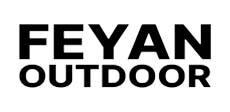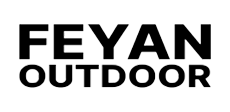Tents have existed since the early ages and have been used for all sorts of purposes, but their main purpose has always been a form of shelter.
Currently, tents are used mostly for recreational purposes such as camping and hiking in the wilderness. Nowadays, a myriad of tent designs can be found across the hundreds of outdoor equipment brands that manufacture them.
With thousands of designs available on the market, you may feel overwhelmed when looking for a tent. However, they can actually be divided into 10 different types of tents based on their general structure, shape, and set-up.
This begs the question, what is the best shape out there for a tent? There is, unfortunately, no way of saying what is the best shape as there are too many other factors that play a part in making a tent good. Furthermore, different shapes do better in different situations and it all boils down to your preference.
Dome Tents
Characterised by the dome shape formed when two poles intersect each other in the middle, dome tents are one of the most popular commercial tents available.
Pros
The poles of the dome tent are kept in tension by the tent’s own groundsheet, meaning no additional guylines or pegs are needed. This keeps the tent easily movable.
The shape of the tent is also aerodynamic, meaning strong winds can glide over the top easily, and water can glide down the sides to prevent a buildup at the top.
The tent is also fairly easy to set up, making it a popular choice amongst novice campers.
Cons
Dome tents are on the smaller end as bigger sizes typically don’t do well in harsh conditions. This keeps your living and storage space limited.
Extended/Modified Dome Tents
This type of tent is basically a dome tent with extensions. An additional curved pole can be fitted onto the main structure of the tent to create additional spaces on the sides.
Pros
The extensions provide you with additional storage or even living space, which may be useful if you find your tent getting a little too cramped.
Cons
The extensions, however, have to be pegged down unlike the main frame of the tent. This prevents it from being free-standing, and you may find it to be a hassle when you want to quickly shift your tent to a better spot. Furthermore, the extensions are typically much smaller than the main body of the tent and have limited headspace as well and serve much better as storage space.
Tunnel Tents
Tunnel tents are made from two or more repeating sets of arches that run the length of the tent, creating a tunnel-like shape.
Pros
There is no limit as to how many arches a tunnel tent can have, hence they come in all sorts of sizes and configurations. Generally, tunnel tents come in larger sizes and can fit occupants.
Furthermore, tunnel tents can have multiple sections, both for storage and for sleeping
Tunnel tents also provide more headroom as compared to dome-shaped tents, and you can actually fully stand up in them.
Cons
Unfortunately, tunnel tents have to be pegged down and thus are not free-standing. Furthermore, their size means that a little more hard work is required to set them up.
Cabin Tents
You can tell a cabin tent by its almost vertical sidewalls, making the tent resemble a cabin, hence its name.
Pros
The vertical sidewalls maximise the interior space of the tent, giving you ample space for many occupants and even multiple rooms. The vertical walls also ensure the headroom is consistent throughout and you won’t find yourself crouching down anytime soon.
Cons
Cabin tents do tend to have a large footprint, so finding ample space for setting them up may be time-consuming. When packed, it can be pretty bulky and it is definitely heavier than most tents, so a vehicle is a must when carrying it around.
Geodesic/Semi-Geodesic Tents
Geodesic tents are composed of multiple poles crisscrossing each other to create a very stable structure. These tents are usually round in shape, although other shapes do exist as well.
Pros
Geodesic tents are extremely stable due to how the poles cross over one another to create multiple triangles or hexagons in the frame that provide excellent structural strength. This makes it one of the best types of tents to use in harsh weather conditions.
Cons
They are, however, on the pricier side and are relatively more difficult to set up.
Rooftop Tents
Rooftop tents, as the name implies, are tents that are meant to be set up on the roof rack of a vehicle, creating an elevated living space.
Pros
When paired with an annexe or awning, the entire set-up can be transformed into a two-storey tent, giving you additional space for storage or even sleeping. Furthermore, with rooftop tents, you are killing two birds with one stone as your parking area doubles as your living space as well.
Cons
There is a falling risk when it comes to rooftop tents which may be unsafe for smaller children. Furthermore, you would require a vehicle with a roof rack as well as the tent has to be mounted.
Popup Tents
Take two flexible coils and coil them up in the tent fabric and you get a popup tent.
Pros
Popup tents are the easiest type of tent to work with and barely require any set-up.
Cons
However, most popup tents are made of a single layer and hence are only suitable in conditions where condensation wouldn’t occur easily, such as the beach.
Popup tents are also fairly light and you run the risk of them being blown away
Bivy Sacks
Bivy Sacks are a mix of sleeping bags and tents, made for a single person.
Pros
They are easy to set up and lightweight as well. The frame prevents the material from sticking to your body, making them much comfier than regular sleeping bags.
Cons
Bivy Sacks are small and users may feel claustrophobic at times. Furthermore, there will not be any storage space for your items.
Teepee/Pyramid Tents
Pyramid tents consist of a single pole in the centre and the sides and staked out, forming its shape.
Pros
With only a single pole and a sheet of fabric, pyramid tents are light and easily packed up.
Cons
However, the single-pole means that the tent is not as stable as other types of tents and doesn’t do well in windy conditions. Furthermore, the pyramid shape means that there is limited interior space.
A-Frame/Ridge Tents
Ridge tents are composed of three poles, one that runs across and two vertical supporting poles. The sides of the tent are then pulled and staked down to create that ‘A’ shape.
Pros
Despite their simplicity, ridge tents are very stable, especially if set up with multiple stakes and ropes. The tent itself is very lightweight as well and can be easily carried around.
Cons
However, the shape of the tent results in limited living and storage space and is suitable for typically only a single user.

